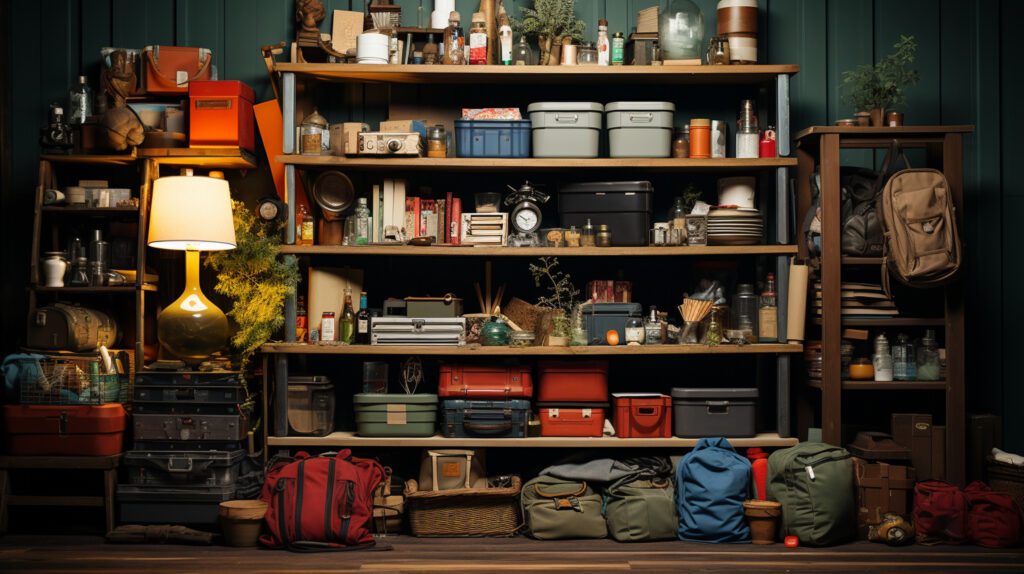Certified Professional Organizer Ginger Willis is an expert at packing moving boxes, and we asked her to teach us how to pack boxes like a Move Manager or Professional Organizer.
How To Pack Moving Boxes Like a Pro

Are you wondering, “Does how I pack a box really matter?” Yes! It does matter because packing like a Pro saves time and money, protects your possessions in transit, and makes unpacking much easier. There’s definitely an art to it!
Ginger offers this ultimate guide to packing like a Pro for your upcoming move:
Tip #1: Declutter as You Pack
Why spend the time, energy, and money to pack and move an item you no longer want or need? As you pack, evaluate each item. Donate or discard anything no longer useful or meaningful, items you know you do not want in your new home, and anything broken or needing to be replaced.
If you declutter your possessions as you pack, you will almost certainly do more work on the front end of your move, but you will thank yourself in your new home. You will have the peace of mind of knowing you are only unpacking items you want.
Tip #2: Use Good Supplies
High-quality packing supplies are the foundation for a successful move in terms of protecting your possessions. A professional can tell you how using low-quality tape or a too-far-gone box quickly ruins your day.
Whether you choose new or used supplies, the Pros will always look for these qualities:
Boxes should be strong and clean. All sides should be crisp with no rips, bends, or pieces cut. You will need a variety of sizes based on your possessions. Heavier items like books should be in a smaller box because they will get heavy quickly. Keep in mind that you want the box to be packed full. (More on this in the next tip!) Specialty boxes like wardrobes, dish packs, and art boxes are great options.
Boxes are a great item to use but choose wisely. One reliable resource is where you can find packing kits based on the size of your home. You can also find lightly used boxes online through NextDoor or Facebook sometimes for free! Finally, If you are working with a Move Manager, they can sometimes help you find used boxes.
Another essential supply is packing tape and a pivotal tool to make taping easier is a tape gun. Learning how to load and use a tape gun allows you to work smarter, not harder.
As a warning, do not use duct tape, masking tape, electrical tape, or scotch tape! Cheap packing tape or the wrong type of tape will ruin your day. High-quality clear packing tape is the only kind you will catch a Pro using.
Your final critical supply is packing paper and padding. Packing paper is inexpensive, easy to use, reusable, and recyclable. Buy lots of it because this simple supply is a workhorse for moving, and if you are packing like a Pro, you will use a ton.
Other types of padding you can use might include bubble wrap, foam wrap, packing peanuts, or shredded paper. If you are able to get packing paper or other padding used, make sure it is clean, crisp, and unripped.
Tip #3: How to Assemble and Pack a Box like a Pro
Packing a box may seem like an obvious task. Just put stuff in the box, right? But a Pro sees each step of the process with more attention and detail than you may expect. We start with the box.
Step 1: Assemble the Box
Fold the bottom flaps in and tape across the bottom seam with that high-quality clear packing tape we discussed earlier. The tape should stretch across both sides and the bottom of the box to seal the seam and hold the flaps tight. For larger boxes, you may also add tape going at diagonals from corner to corner to create more support and structure.
Step 2: Pack the Box
Put a layer of padding in the bottom of the box for cushion. Use more if you are packing fragile items.
Wrap fragile items generously with packing paper and use more paper or other padding around the items. In larger boxes, you can also use household items like blankets, towels, sheets, and pillows for additional padding if the contents of the box will not soil your linens.
Boxes should be packed tightly. They should be full but not bulging on the sides. You do not want items to shift around inside the box as it is lifted, stacked, and vibrating during the transition.
Add a little more padding on the top before sealing. You want the top of the box to feel secure and strong so the box will not collapse when it is stacked.
Step 3: Seal and Label the Box
Fold the top flaps and tape across the top seam. A detail that should not be forsaken is to label every box clearly and intentionally so boxes are unloaded into the room where they will be unpacked. Use a wide, black permanent marker or printed labels for legibility. Label each box on 3 adjacent sides (top and 2 sides of the same corner) so no matter how the box is sitting or stacked you can find the label.
Label each box with the destination room (the room where the box will be unpacked), a content summary, and any special instructions such as “Heavy” “Fragile” or “Unpack 1st/Last.”
Now you know how to pack like a Pro, but you don’t have to! Rely on the real Pros, like Move Managers, Professional Organizers, Movers, and specialists to relieve the overwhelm of your move.





